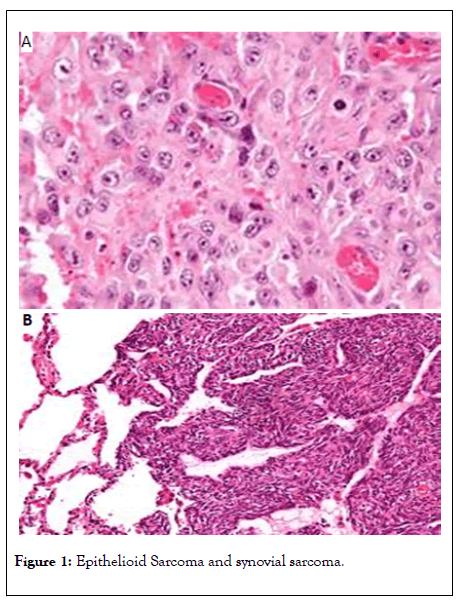Journal of Cancer Research and Immuno-Oncology
Open Access
ISSN: 2684-1266
ISSN: 2684-1266
Image Article - (2020)Volume 6, Issue 2
Sarcoma is a type of cancer that can occur in various locations in the body.Sarcoma is the general term for a broad group of cancers that begin in the bones and in the soft (also called connective) tissues (soft tissue sarcoma). Soft tissue sarcoma forms in the tissues that connect support and surround other body structures. This includes muscle, fat, blood vessels, nerves, tendons and the lining of the joints.
Signs and symptoms of sarcoma include:
• A lump that can be felt through the skin that may or may not be painful
• Bone pain
• A broken bone that happens unexpectedly, such as with a minor injury or no injury at all
• Abdominal pain
• Weight loss
Generally, cancer forms when changes (mutations) happen in the DNA within cells. The DNA inside a cell is packaged into a large number of individual genes, each of which contains a set of instructions telling the cell what functions to perform, as well as how to grow and divide.
Mutations make the cells to grow and divide uncontrollably and to continue living when normal cells would die. If this happens, the accumulating abnormal cells can form a tumor. Cells can break away and spread (metastasize) to other parts of the body.
Tests and procedures used to diagnose sarcoma and determine its extent (stage) include:
• A physical exam.
• Imaging tests.
• Removing a sample of tissue for testing (biopsy).
Sarcoma is usually treated with surgery to remove the cancer. Other treatments might be used before or after surgery. Which treatments are best for you will depend on the type of sarcoma, its location, how aggressive the cells are and whether cancer has spread to other parts of your body.
Treatment for sarcoma might involve:
• Surgery.
• Radiation therapy.
• Chemotherapy.
• Targeted therapy.
• Immunotherapy.
• Ablation therapy.
Epithelioid Sarcoma and Synovial sarcoma is shown in Figure 1.

Figure 1: Epithelioid Sarcoma and synovial sarcoma.
Citation: Kang K (2020) Sarcoma-Symptoms, Causes and Treatment. J Cancer Res Immunooncol.6:124. DOI: 10.35248/2684-1266.20.6.124
Received: 03-Jul-2020 Accepted: 17-Jul-2020 Published: 24-Jul-2020 , DOI: 10.35248/2684-1266.20.6.124
Copyright: © 2020 Kang K. This is an open-access article distributed under the terms of the Creative Commons Attribution License, which permits unrestricted use, distribution, and reproduction in any medium, provided the original author and source are credited.